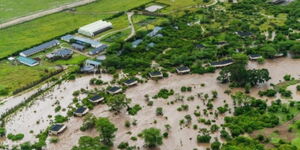The government had revealed plans to enforce new standards for all vehicles imported into the country.
As detailed in the National Road Safety Action Plan 2024-2028, which was launched by President William Ruto on April 17, the government is seeking to enforce eight new standards to safeguard motorists, passengers and pedestrians.
Notably, the new standards have been adopted by the United Nations and touch on various features of vehicles such as the body of vehicles and inside features such as seat belts.
Among the standards include frontal impact protection, side impact protection, electronic stability control, pedestrian front protection, seat belts, seat-belt anchorages, child restraints, and motorcycle anti-lock braking systems.
For instance, on the standards for safety belts, it is required that vehicles have a system that can alert drivers and motorists when occupants have not fastened their seatbelts. This can be through a repeated sound that only stops when the seat belt is fastened.
On the other hand, child restraints are devices installed in car seats and are aimed to protect children during a journey.
Frontal impact protection and side impact protection also provide guidelines on systems that vehicles should have to protect the occupants of the vehicles should there be a collision.
The new standards will be enforced within the next five years.
"The Kenya Bureau of Standards and the NTSA will need to play a critical role in introducing modern vehicle safety regulations, and in achieving better compliance with current roadworthiness and vehicle modification standards under the Traffic Act, the NTSA Act and the Standards Act.
"In theory, all commercial and public transport vehicles are required to be inspected on an annual basis, and there is a comprehensive test manual that meets international standards. In practice, the small number of existing government-owned test centres do not have sufficient capacity to test all the vehicles that they should test," read the report in part.
The government noted that these standards will help in the reduction of fatalities during road accidents.
While it was noted that the implementation would be done in phases, the Ministry of Transport maintained that the new proposals were necessary given the recent malpractice witnessed in the importation of vehicles.
"Standards are also in place for vehicle modification, but truck chassis imported as second-hand vehicles from Japan, then converted into public transport vehicles by local vehicle bodybuilders, often provide insufficient occupant protection in the case of a crash.
"Given their vital role in Kenya’s transport system, it is critical that this issue is addressed," read the proposed regulations.












